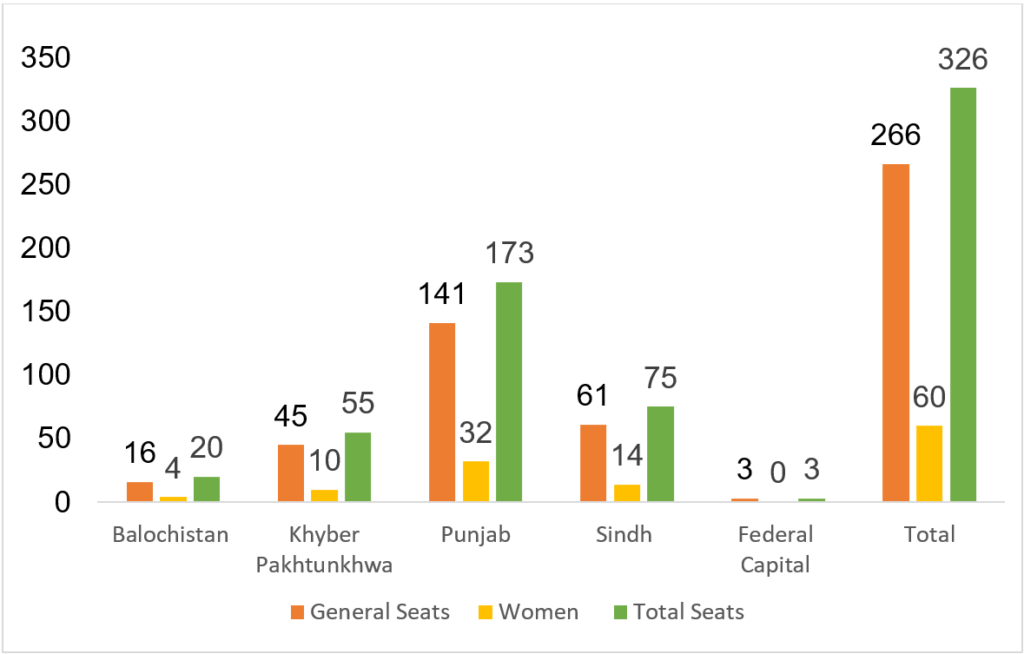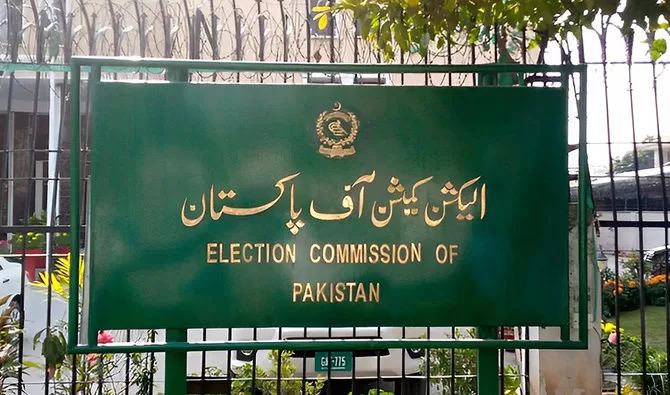Population census plays an important role in the effective planning and administration of people living in a country. From the electoral process to resource distribution – every decision depends on the headcount. It helps to improve people’s living standards and take measures to bring the masses out of poverty. For the equal distribution of resources and development of the underprivileged province, accurate information on the population is inevitable. It doesn’t only provide useful information for the planning and development of an area but it can help to ensure that development efforts are more effective and sustainable.
When there is a consensus on the goals and priorities of development, it is easier to mobilize resources and coordinate efforts. It also helps build trust and cooperation between stakeholders which is essential for long-term success. Strong data is required for people’s mandate and their rights’ protection through the delimitation of electoral constituencies’ electoral representation, and policy planning. The recent announcement by the Election Commission of Pakistan (ECP) of the preliminary delimitation report, including Form 5 lists and maps on its official website. The preliminary report of delimitation reveals the population distribution in the National Assembly constituencies as follows: Balochistan leads with 930,900 voters, followed by Sindh with 913,052, Khyber Pakhtunkhwa with 907,913, Punjab with 905,595, and Islamabad with 787,954 voters.
This delimitation report is based on the 2023 census results, where the allocation of seats in the national and provincial assemblies was determined by dividing the population of each province/area by the total number of general seats, establishing an average population quota per National Assembly seat. Fractional values of 0.5 and above were rounded up to the nearest seat, while those below 0.5 were disregarded. In certain cases, districts in Balochistan were combined due to unique circumstances, and similar adjustments were made in other provinces where necessary.
In terms of provincial assembly constituencies, Punjab has the highest population with a total of 429,929, followed by Sindh with 428,432, Khyber Pakhtunkhwa with 355,270, and Balochistan with 292,047. According to the ECP, the National Assembly comprises 266 general seats, 60 seats reserved for women, and 10 seats reserved for non-Muslims. Punjab has the highest number of seats with 141 in the National Assembly, followed by Sindh with 61, KPK with 45, Balochistan with 16, and Islamabad with 3 (See Figure 1).
Figure 1: National Assembly Seats

Source: Data obtained from the Election Commission of Pakistan.
The National Assembly’s composition has undergone a reduction of six seats, resulting in a total of 336 seats. This reduction is a consequence of the Election Commission of Pakistan’s (ECP) decision to revise the representation of the newly merged districts in Khyber Pakhtunkhwa (K-P) from 12 to six, in alignment with the 2023 census. The ECP’s preliminary report confirms that seat allocations for the other provinces remain unchanged. Accordingly, Punjab retains its 141 National Assembly seats, Sindh maintains 51, Balochistan holds 16, and Islamabad continues with three seats.
The recent delimitation has again raised the question of the credibility of the 2023 census. The process of delimitation in Pakistan is crucial for establishing constituencies that accurately represent different population groups. The Election Commission of Pakistan (ECP), an independent electoral oversight body mandated by Article 218 of the Constitution, is responsible for delineating national and provincial constituencies.
According to the law, constituencies must be demarcated to ensure a relatively equal distribution of the population among them.
This equitable distribution of population ensures that every individual’s vote carries equal weight regardless of their location, whether in urban or rural areas. It is important to note that gerrymandering, a practice that involves manipulating constituency boundaries to either dilute an opponent’s support across multiple districts or concentrate voters in a single district, can undermine the fairness of elections. Essentially, gerrymandering serves as a form of pre-election manipulation, resulting in the targeted party securing fewer seats than its actual popular support would suggest.
Although the term “gerrymandering” may not frequently appear in Pakistan’s pre-election discourse, the concept is undeniably present in practice. In almost every election, there are claims of unfair delimitation—essentially, allegations of gerrymandering. After every election, there is a hue and cry over unjust delimitation.
It is worth noting that back in 2018, the Free and Fair Election Network (FAFEN) analyzed the delimitation proposals presented by the Election Commission of Pakistan (ECP).
Their examination focused on identifying disparities in the population and voter sizes of National Assembly (NA) constituencies when compared to national, provincial, and district averages. According to legal guidelines, the population variation among constituencies in an Assembly should ideally not exceed ten per cent. However, FAFEN’s analysis revealed that this ±10% limit was exceeded in 81 out of the 260 National Assembly constituencies that were being delineated under the Elections Act of 2017.
While the Act does allow the ECP to deviate from this limit under exceptional circumstances, it mandates that any such deviations must be properly documented in the Delimitation Order. Regrettably, the ECP exercised this discretionary power in roughly one-third of the constituencies undergoing delimitation, which contradicts the vote equality principle outlined in the Elections Act of 2017.
The upcoming election in January 2024 will again bring the question of transparency, free and fair elections and equal representation of the people of Pakistan. The process depends on the accurate results of the census, especially in marginalized areas where people are already raising their voices for basic human rights and representation in provincial and national assemblies.
The Digital Census in Pakistan was introduced as a novel initiative that promises to deliver precise results while cutting costs. However, the outcome was marred by challenges including inadequate data security, technological glitches, and a lack of public awareness. Insufficient protection or unauthorized access could potentially lead to data manipulation or hacking. Furthermore, the frequent extensions of the headcount deadline sparked dissatisfaction among political parties. The results of Pakistan’s inaugural digital population census faced criticism from various political factions, particularly in the Sindh Province.
It was just not the political parties but the severity of the matter was stressed by civil society, intellectuals, and lawyers. They rejected the census results concluded in May on the account of undercounting of the rural population in Sindh. The federal government was criticised over their interference in the favour of Punjab Province, as the census 2017, allegedly increased the number of assembly seats for Punjab.
Recently, the political parties of Sindh and other stakeholders raised their voices against figure fudging to keep power concentration both politically and administratively in Punjab.
The 2023 Pakistan census has been mired in controversy since its inception. The initial results which were announced in May 2023, were met with widespread criticism and objection from almost every stakeholder. The main concerns were that the census was flawed and that the results were inaccurate.
In May 2023, it was declared that the total population of Pakistan was 249 million; Sindh:57.9; Balochistan: 21.7 million; Punjab: 127 million, and KPK: 39.8 million. If this census was held uprightly then why do the results announced in May and August differ?

In response to the criticism, the Pakistan Bureau of Statistics (PBS) conducted a review of the census results. The review found that there were indeed some errors in the data, and the results were subsequently rectified. The revised results, which were announced on August 5th 2023, with the unanimous approval of the Council of Common Interests (CCI), were significantly different from the initial results.
The reasons for the discrepancy between the May and August results are not fully known. However, there are several possible explanations. One possibility is that the initial results were based on incomplete or inaccurate data. Another possibility is that there were errors in the way the data was collected or processed. It is also possible that there was a deliberate manipulation of the data.
To illustrate, let us consider the case of Sindh Province. The underreporting of the Sindh population especially Karachi City has always been controversial and questioned. In 2017, it was reported as 17 million but it was around 20 million as claimed by the stakeholders.
In the 2023 digital census, the de jure method is employed which involves counting people at their usual residence. While the de facto approach involves counting people where they are found on the day of the census, this method fails to count internal migrants and seasonal migrants.
Karachi is a major destination for internal migration in Pakistan. People from all over the country come to Karachi for employment, either permanently or temporarily. The city has experienced a significant influx of people from tribal areas and Khyber Pakhtunkhwa. Karachi is also home to a sizeable number of undocumented migrants, including Afghan refugees, Bengalis, Burmese Rohingyas, and Saraikis.
These communities are often ignored and unaccounted for in censuses. In addition, families affected by the 2010 floods who are still living in Karachi are still considered residents of their hometowns, even though their addresses have changed.
All of the Karachi and Sindh undercounts have been questioned and addressed to some extent as the urban population in Sindh rural and urban has been rectified in the final results of the census-2023. However inaccurate results of the population of Balochistan need attention and serious efforts from the federal government. In May 2023, the population of Balochistan was 21.7 million according to the results of the 2023 digital census. The alarming result was announced on August 08, 2023, when the population of Balochistan was declared as 14.8 million. The decrease in population by 7 million is astonishing and raises serious questions in a sane mind.
A human error or technological failure in counting masses or a conspiracy against the people of Balochistan, whatever the case, needs to be investigated in its true letter and spirit.
The Balochi people are already marginalized and have been fighting for their basic rights for so long. The National Finance Commission (NFC) also count on this data to determine the distribution of financial resources based on population size. This is the first step to ensure a fair share of resources, promoting equity in the allocation of provinces and territories with larger populations. In the election process representation in the assembly may only change by 2 or 3 seats but a lower share in federal resources will further deteriorate the socioeconomic status of the Baloch People.
Understandably, the digital census is held in Pakistan, in fact in South Asia for the very first time, but one can simply not just ignore the missing 7 million Balochi people from the counting process. There must be some accountability for errors or negligence of the census team.
Digital censuses are meant to be more accurate and reliable, so a transparent internal inquiry within the census department must be conducted. To protect the rights of already marginalised people and invest in the right direction for prosperity.
It is time to probe into the matter, find wrongdoings/faults/errors, and ensure such incidents never happen again. In addition to the investigation, the government should also take steps to address the underlying causes of the discrepancy. In this globalized world, modern governance depends not only on the quantification of human capital but also on its quality.





